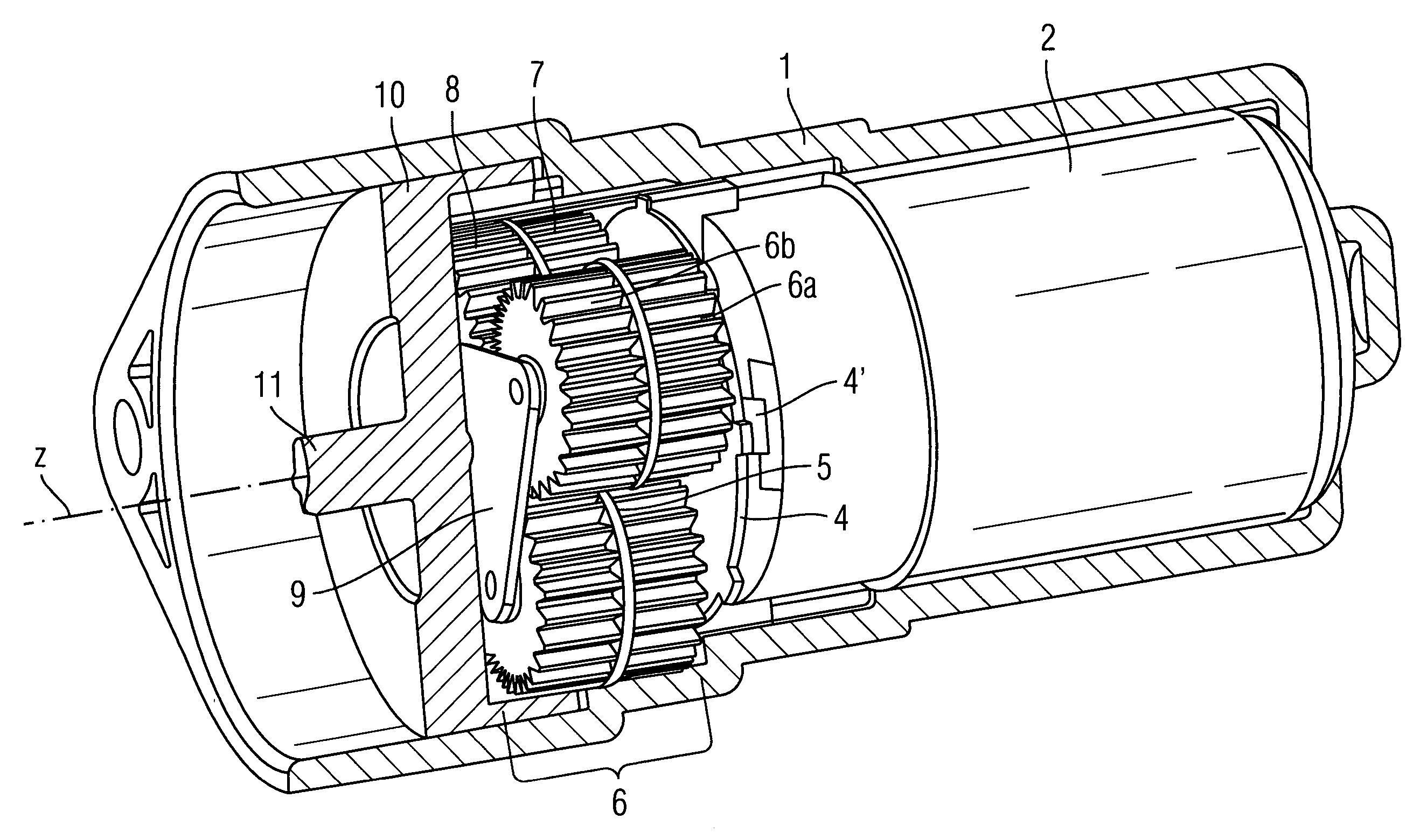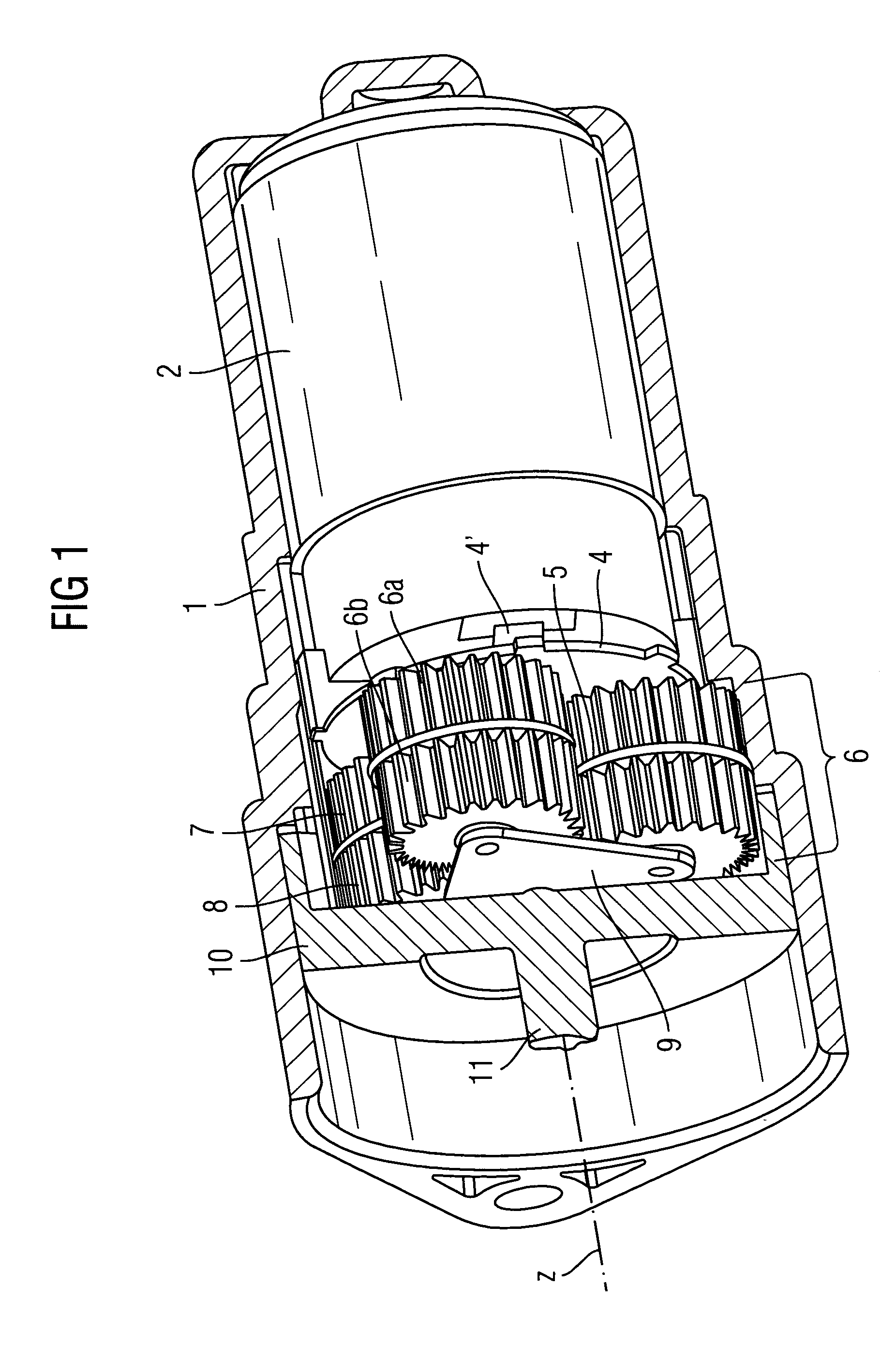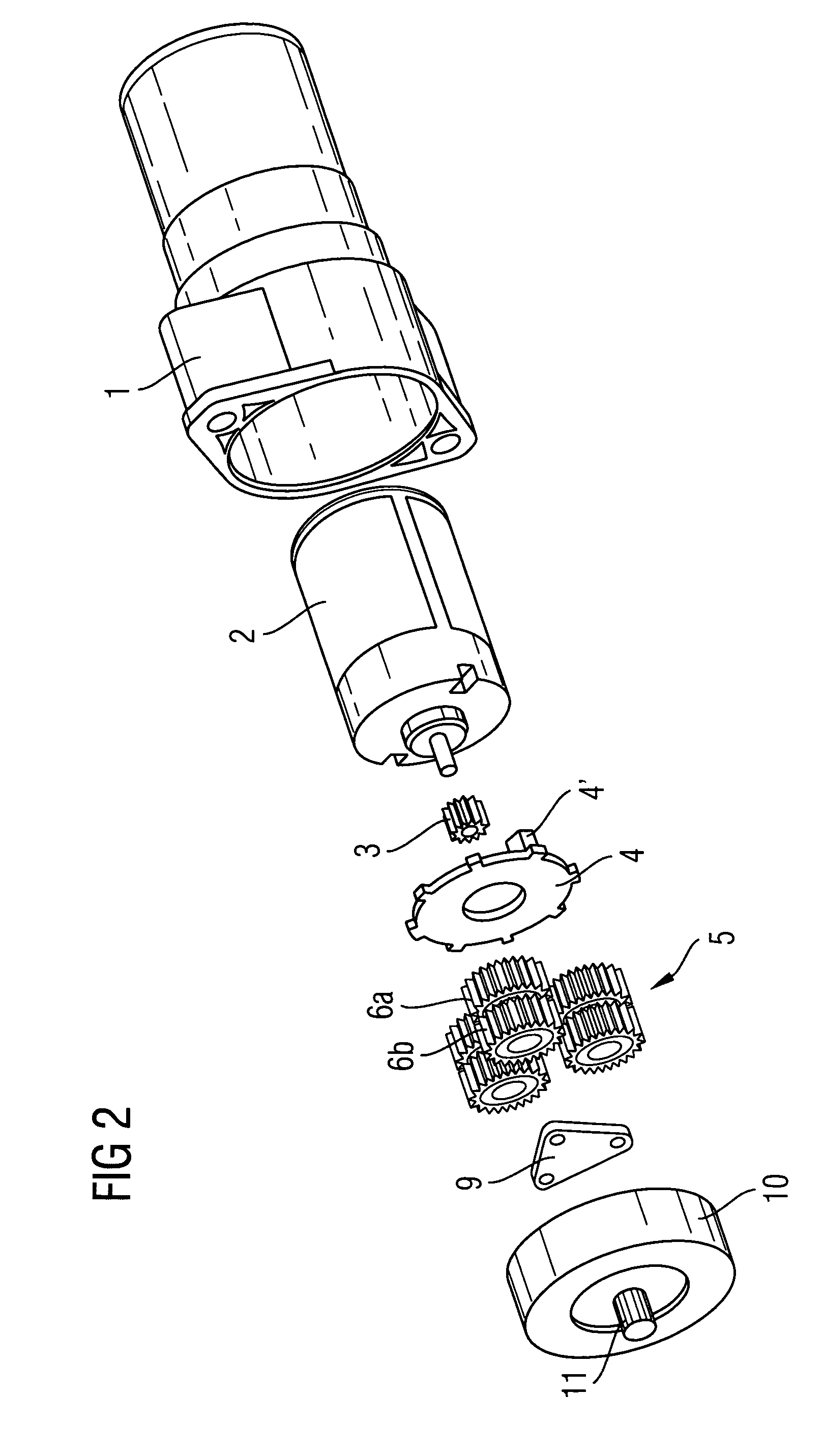Actuator
a technology of actuators and rolling bearings, applied in the field of actuators, can solve the problems of not always desirable arrangement of double rolling bearings, relative large structural space to be provided, etc., and achieve the effects of no lateral structural space, high step-down ratio, and rapid and simple manner
- Summary
- Abstract
- Description
- Claims
- Application Information
AI Technical Summary
Benefits of technology
Problems solved by technology
Method used
Image
Examples
Embodiment Construction
[0017]FIG. 1 is a three-dimensional illustration in partial section of one design of the actuator. The actuator comprises a housing 1 which has a longitudinal axis Z and in which an electric motor 2 is arranged. The pinion (not illustrated) of the electric motor 2 is used in each case to engage in a first gearwheel 6a of a planetary gear 5, which gearwheel forms, in each case together with a second gearwheel 6b arranged directly adjacent, a uniform double gearwheel 6. In this case, the double gearwheel 6 may, for example, comprise an individual part. Overall, three double gearwheels 6 are arranged. The respective first gearwheels 6a run in a first toothed ring 7, which constitutes a unit directly with the housing 1. The housing 1 and the first toothed ring 7 are therefore manufactured as an individual part. The respective second gearwheels 6b run in a rotatably mounted, second toothed ring 8, which is part of a cup-shaped wheel 10 which has, in the center of its side facing away fro...
PUM
 Login to View More
Login to View More Abstract
Description
Claims
Application Information
 Login to View More
Login to View More - R&D
- Intellectual Property
- Life Sciences
- Materials
- Tech Scout
- Unparalleled Data Quality
- Higher Quality Content
- 60% Fewer Hallucinations
Browse by: Latest US Patents, China's latest patents, Technical Efficacy Thesaurus, Application Domain, Technology Topic, Popular Technical Reports.
© 2025 PatSnap. All rights reserved.Legal|Privacy policy|Modern Slavery Act Transparency Statement|Sitemap|About US| Contact US: help@patsnap.com



